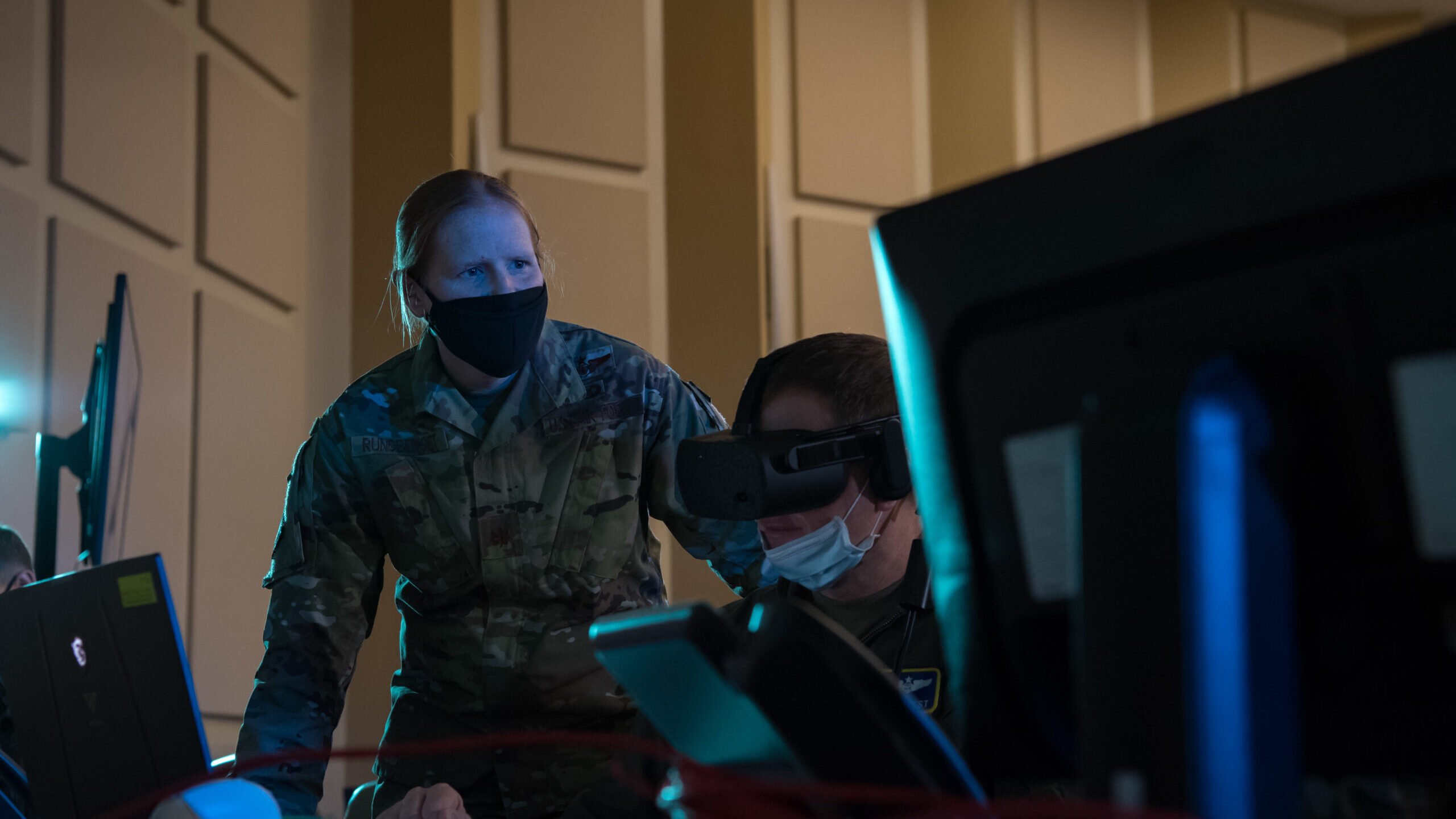MICHAEL MARROW
 WASHINGTON — While the Air Force tries to ramp up its contribution to the Pentagon’s Joint All Domain Command and Control (JADC2) initiative, a key official warned Monday that the US military’s “network-centric view of security is killing us.
WASHINGTON — While the Air Force tries to ramp up its contribution to the Pentagon’s Joint All Domain Command and Control (JADC2) initiative, a key official warned Monday that the US military’s “network-centric view of security is killing us.“Our ability to push data in the places and to the people that need to get it right now is confined by whether or not you’re on a network that allows me to talk to you. My ability to scale from an ABMS perspective is significantly constrained by that fact,” Brig Gen. Luke Cropsey, the Air Force’s integrating program executive officer for Command, Control, Communications and Battle Management (C3BM), said during a discussion hosted by the Air & Space Forces Association when asked how the Air Force’s Advanced Battle Management System (ABMS) considers allies and partners.
To broaden JADC2 capabilities, Cropsey said he needs new tools to enable better data transfer, ones he cautioned would not materialize in a “silver bullet” solution.
“Until I get to a good identity management system that’s coupled in with a good zero trust capability that allows me to start to get to network-agnostic data flows, our ability to integrate both across services and with partners is going to continue to be challenged,” he said. Translated, he means operators need a simple and secure way to share data with whomever they want.
The Air Force recently overhauled its ABMS effort, and it’s now subsumed under what’s called the Department of the Air Force Battle Network. But ABMS is still continuing to develop the digital infrastructure that would enable various Battle Network efforts to plug into cloud-based command-and-control.
Though the data-sharing challenges remain, Cropsey said officials aren’t “waiting for the system to go figure that part of it out,” and are instead working within existing structures “to accommodate those things when and where we need to in order to get the mission done.”
Already he said he’s seen progress, albeit sometimes at a more basic level. For example, under a team headed by Air Force chief engineer for C3BM Bryan Tipton, service personnel have “done a phenomenal job on doing an initial crank through [of] some of those priority mission sets. And we’ve identified some very clear needs around what that looks like.”
Separately, Cropsey said that working with the Navy’s JADC2 contribution, the secretive Project Overmatch, “We’re at a point now with the Navy where we can seamlessly move apps that have been developed on the air and space side of this over to the Navy side of it and vice versa. So just the rather rudimentary idea that we could actually share applications across services is a nut that we hadn’t cracked until relatively recently. And that happened this past spring.”
Cropsey highlighted working with Northern Command and NORAD to field cloud-based command-and-control capabilities, a project that he said delivered the first minimally viable capability release in the past month and is on track for initial operational capability by the end of the year.
But procuring solutions for the high-tech problems Cropsey is tasked with presents inherent challenges as well, he said, noting that “we don’t necessarily have a lot of acquisition savvy” for buying data-as-a-service solutions that can also pose licensing issues down the road.
In essence, JADC2 is about closing kill chains — the process of identifying and attacking a target by leveraging all available sensors and shooters — with each service holding its own notions of how to do so. Cropsey emphasized that “mov[ing] forward collectively at scale” hinges on “our ability to actually coalesce around a prioritized set of those kill chains that we can all hold in common.
“So we’re just going to have to keep working it, and collectively, I’m convinced we’ll find a way to link it. But it’s going to take the whole village here to work through what we have to do to make that happen.”
No comments:
Post a Comment